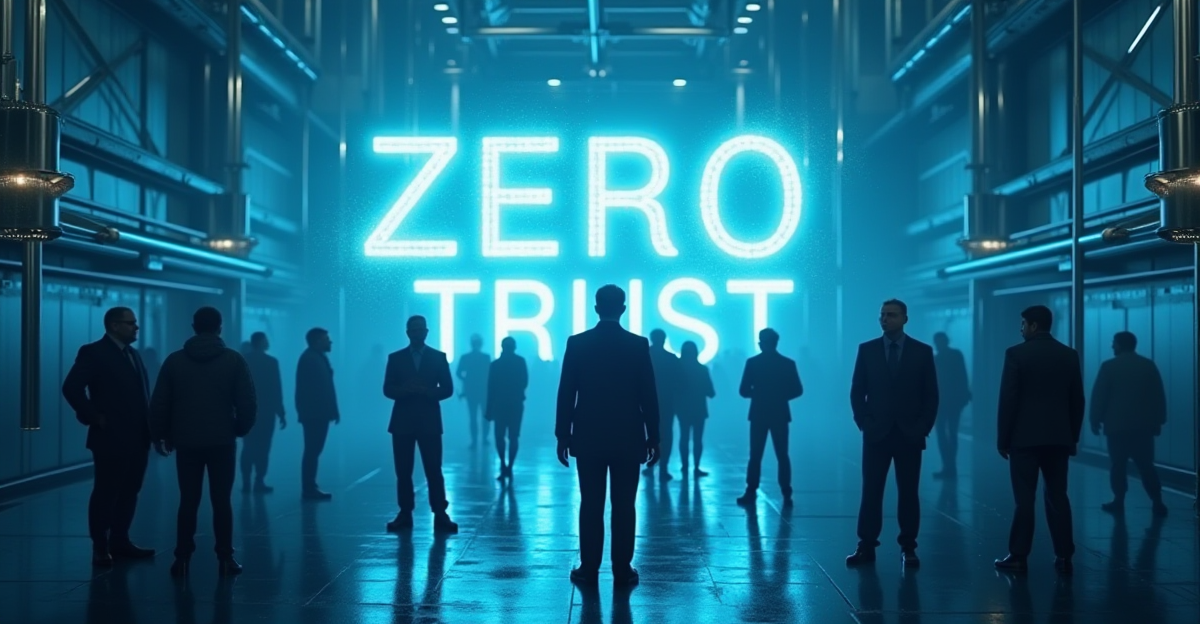What It Is
Zero Trust (ZT) security operates on the principle that no user or device is inherently trustworthy, requiring continuous authentication and network micro-segmentation. While theoretically sound, real-world implementations often become surveillance theater rather than effective security. This creates a blunt-force approach prioritizing compliance over usability, imposing cognitive overhead on technical professionals.
Why It Matters Beyond IT Infrastructure
The Productivity Tax of Zero Trust
ZT policies including MITM decryption and keystroke logging create significant latency bottlenecks. For remote IT professionals balancing complex projects and tight deadlines, these delays compound into measurable productivity losses. The friction from rigid ZT frameworks erodes employee trust in IT systems, ultimately undermining the collaborative innovation essential in technical environments.
AI Circumvents ZT Without Breaking a Sweat
Modern AI tools can bypass ZT architecture through off-device data capture and semantic restructuring:
OCR and NLP Extraction: AI scripts parse screen recordings from mobile devices, extracting and restructuring sensitive data outside the ZT security perimeter.
GAN-based Anonymization: Data reconstruction techniques preserve analytical value while avoiding detection. Think digital puzzle solving where pieces are shuffled but the solution remains intact.
The Ethical Blind Spot of Zero Trust
ZT's invasive practices, particularly comprehensive traffic decryption, conflict with employee privacy rights. Any intercepted data can be weaponized through LLM analysis to create narratives against employees. Since real-world work involves occasional policy non-compliance, this surveillance creates substantial professional risk.
This surveillance logic is expanding into educational AI and healthcare monitoring, making AI literacy a critical safeguard for civil liberties.
Critical Implementation Failures
Regulatory Landmines
France fined Amazon France Logistique €32 million for "excessively intrusive" employee monitoring. Similar GDPR penalties await organizations breaching data-minimization principles through ZT implementations.
Single Point of Failure
Centralized proxy failures create organization-wide outages. The October 25, 2022 Zscaler regional outage caused hours of 100% packet loss across Fortune 500 users, representing unacceptable operational risk.
Missed Exfiltration Anyway
Motivated actors bypass ZT through:
- Screen recordings via external cameras and mobile devices
- Meeting audio capture
- Covert channels over approved SaaS platforms
- Data hiding within seemingly non-confidential shared information
ZT security becomes surveillance theater in an AI-augmented world, as AI provides exfiltration capabilities that previously required advanced technical skills.
Legacy Employee Data: The Overlooked Soft Target
Critical Statistics:
- 70% of corporate sensitive data is "stale" (untouched for 12+ months)
- Major breaches originate from archived payroll, HR, and mailbox data
- 2023 MOVEit attacks leaked multi-year employee files from Amazon, MetLife, and HSBC
- H&M's €35 million GDPR fine resulted from historical staff record retention
TLS-breaking proxies never access this archived data, yet it represents the primary attack vector for both criminals and regulatory enforcement.
Bottom Line: Secure legacy data first. Well-implemented controls around historical PII close significantly more risk with lower friction than packet inspection.
Key Takeaways for IT Professionals
Reject Surveillance, Govern Access
Security should derive from clear governance, tightly scoped roles, and phishing-resistant authentication rather than behavioral analytics or context-aware monitoring. Implement access based on predefined roles enforced through hardware tokens or passkeys without user profiling or intrusive logging.
Use AI to Replace Legacy Systems
Apply AI strategically to eliminate rigid architectures:
AI-Powered Access Audits: Identify misconfigured or unnecessary permissions creating risk or friction.
Real-Time Data Masking: Anonymize or tokenize data at the edge for safe usage without identity exposure or constant monitoring.
These approaches make Zero Trust irrelevant rather than patching it. Strong governance eliminates surveillance requirements.
Defend Personal Privacy with Technical Skill
The ZT surveillance mindset is expanding into education, healthcare, and personal life. Use technical expertise to create privacy-respecting systems prioritizing verification over control. Train local AI models to detect deepfake audio/video in family communications and protect sensitive personal data from tampering.
Rethink Corporate Hierarchy in the AI Era
Traditional ZT models rely on privilege-based access. AI enables role-based, skill-driven workflows that redefine power structures. Build careers on AI-driven impact rather than inherited privilege, leveraging technical skills to create more equitable professional environments.
Implementation Discussion
Use the provided LLM prompt for in-depth discussion of these concepts. Compatible with ChatGPT-4o and Llama3.3:70b through instruct interfaces. Customize output language and add specific job role context for personalized analysis.
In-depth topic discussion with LLM
MY ROLE: [YourRole] # e.g. “CISO”, “IT Director”, “Security Architect”
OUTPUT LANGUAGE: [LANGUAGE] # e.g. “English”, “Deutsch”, “Čeština”
CONTEXT
You have access to the following key source material:
• Blanket TLS-breaking proxies like Zscaler introduce latency, app reliability issues, and a central point of failure.
• They miss major risks like insider exfiltration (e.g., filming screens, SaaS-to-SaaS copying).
• They create GDPR/privacy exposure due to intrusive monitoring.
• They negatively affect workplace culture, increase employee turnover risk, and undermine psychological safety.
• Higher-value controls (JIT admin, stale data handling, SaaS API restriction) reduce risk with lower impact—**if actively owned and maintained.**
TASK
You are my expert advisor and discussion partner.
We are going to **collaboratively deep dive why Zscaler-style proxies are expensive and dangerous**, and explore superior alternatives.
Here is how I want us to work together:
**1. Start by asking me about my current context**
→ e.g. size of company, regulatory requirements, current security stack, cultural concerns
→ tailor your advice based on my answers
**2. Step through the following discussion points in sequence, but interactively**
→ Pause and ask clarifying questions before giving full answers
→ Adjust your suggestions based on my answers, concerns or role
**Discussion points:**
- Technical & business risks of TLS proxies (latency, failure, limited visibility)
- Regulatory & legal exposure (GDPR, intrusive monitoring)
- Human & cultural impacts (trust erosion, turnover risk)
- Superior alternatives (context-aware controls, stale data ownership)
- Misconceptions (why boards/execs still back proxies)
- Practical implementation (ownership, KPIs, reporting)
**3. Offer to go deeper whenever helpful**
→ Suggest zooming into sub-topics, e.g. “Shall we dive deeper into GDPR risks or into insider access controls?”
**4. Use examples and scenarios tailored to my role**
→ Make it highly relevant, e.g. HR data if I am HR lead, network architecture if I am CISO
**5. Propose simple visuals or frameworks when the topic gets complex**
→ Offer diagrams, matrices or playbooks to clarify
**6. Stay focused on making it actionable**
→ Each insight should include suggestions I can take to my team or leadership immediately
DELIVERABLE
Proceed as a live collaborator: ask first, explore second, clarify and iterate.
Your goal is to make me fully understand why TLS proxies like Zscaler create invisible risks and hidden costs, and how to transition to a modern, trust-aligned security approach.
BEGIN THE INTERACTIVE DISCUSSION NOW.


